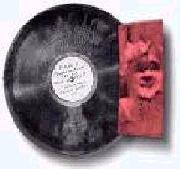John Logie Baird- Television Recording -1930
John Logie Baird was a Scottish inventor. He was born in 1888 and died in 1946. His inventions and experiments were about television. He is Mr. TV.
Here is a list of some of his British television inventions and experiments:
1. He invented a mechanical T.V system.
2. He experimented with infrared television.
3. He was the first to send a TV signal along telephone lines.
4. He also was the first to send a TV picture by radio from London to America.
5. He invented a colour TV system.
6. He invented a TV recorder.
Baird demonstrated that TV worked. He was the first person in Britain to invent a 30-line mechanical television system. His company made TV sets. Lots were sold and people started to watch TV. He also invented a video recorder and video discs. His system broadcast programmes and allowed them to be recorded.
The BBC started Baird TV broadcasts in 1929. The Baird 30-line TV system was stopped in 1936 when an electronic system was started.
Pictures exist which show the machine Baird invented to record the TV programmes. A technician can be seen is holding a video disc.
Also in existence are the original advertisements for the Silvatone home TV recorder sold in the shops. A company in London, England made it and it recorded TV programmes onto aluminium discs.This equipment could only record the Baird mechanical TV programmes.
Watching TV was done late at night because the programme started at 11 oclock and ended at midnight. Musical programmes were often shown. Many television viewers bought the recorders and made home recordings of the programmes they watched.
McLean Reads the discs.
In the 1990s another Scotsman called Don McLean was able to use computer equipment to read the discs. He discovered a fantastic visual history. This is what he found.
The first disc contained Baird TV experiments. The picture of a lady can be seen.
The second disc is called the Marcus Games Disc. It shows scenes from a television programme.
The third disc is a Silvatone home recorded disc. It contains the opening of a musical programme called Looking In. A group of dancers start the show. It was recorded in April 1933.
The forth disc was a test disc sold at a shop called Selfridges. This is a large Department Store in London. The disc contains black and white pictures.
The contents of the first video discs show a visual record of the early days of British television. They cover a 6-year period. They show Bairds experiments and samples of early 1930s TV programmes.

A Baird -Phonovision Disc.
www.dfm.diron.co.uk
The full story can be found on this web site.


